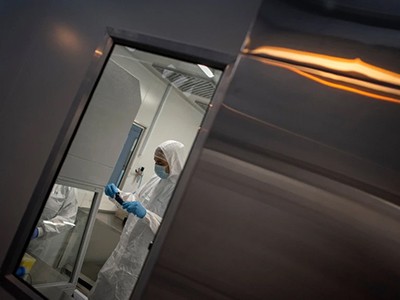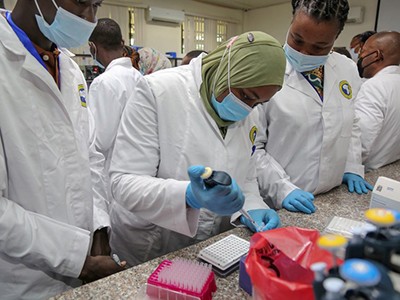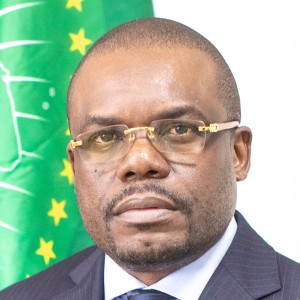This year is a crucial one for the Africa Centres for Disease Control and Prevention (Africa CDC). Launched by the African Union (AU) in 2017 after the Ebola epidemic in West Africa, the organization was directed by Cameroonian virologist John Nkengasong for its first five years, including the first two years of the COVID-19 pandemic. I succeeded him as director-general in April after more than 25 years of managing public-health programmes across Africa, working with bodies such as the World Health Organization (WHO), the United Nations children’s charity UNICEF and GAVI, the vaccine alliance.
The Africa CDC faces many challenges, not least to apply the lessons learnt from COVID-19 (C. T. Happi & J. N. Nkengasong Nature 601, 22–25; 2022) as we strive to become a world-class, self-sustaining and agile institution. According to our 2022 priority ranking of infectious diseases, Ebola, cholera and COVID-19 have the highest epidemic potential across Africa, and the diseases the continent is least prepared for are the plague and Crimean–Congo haemorrhagic fever, as well as any as-yet unknown disease.
Africa is bringing vaccine manufacturing home
Our remit has also expanded to include non-infectious diseases and mental health. In many AU nations, people are more likely to die of non-communicable diseases — such as cardiovascular disease, cancer and diabetes — than of communicable, nutritional, maternal and perinatal conditions put together. Yet less than 20% of AU member states have surveillance programmes for non-communicable diseases.
In response to these challenges, our efforts to transform public health on the continent are focused on six areas:
Local manufacturing of vaccines, diagnostics and treatments. The Africa CDC must coordinate the continental agenda on local manufacturing of these fundamental health-care tools, targeting outbreak-prone as well as non-communicable diseases, and mental-health conditions. This includes working with various stakeholders to ensure that appropriate regulatory frameworks are in place, providing manufacturers with financial support and helping to create a conducive market environment. To help expand regional manufacturing capabilities, we have signed a memorandum of understanding with GAVI to work on market design and forecasting of vaccine demand.
Improved surveillance, intelligence and early-warning systems. A new partnership between the Africa CDC, the WHO and the Robert Koch Institute in Berlin will improve health security on the continent by strengthening integrated disease surveillance at the community level, democratizing genomic surveillance and strengthening epidemic intelligence. The first phase will be implemented in Gambia, Mali, Morocco, Namibia, Tunisia and South Africa.
We are also working to outfit all rural health clinics with tests for the 15 most common infectious diseases. Ruling out pathogens that researchers already know about is the best way for these clinics to reliably flag potential new diseases — and prevent them from jumping from rural to more densely populated urban areas.
Integrated health systems and robust primary care. Because of the crucial role of primary care in both infectious and non-communicable disease prevention and management, Africa CDC has secured a grant to fund primary health-care facilities in rural areas. Even in areas that don’t have a freezer capable of storing biological samples at −80 °C, much can be accomplished by improving information technology and empowering community-health workers to collect and process samples and send them to central laboratories.
Two years of COVID-19 in Africa: lessons for the world
As part of our mission to mentor and develop the next generation of public-health leaders, this year the Africa CDC has allocated US$3.9 million to training programmes, including for field epidemiologists. In partnership with the Kofi Annan Foundation, established by the Ghanaian former UN secretary-general, we have trained 40 leaders of public-health institutions from 31 AU member states; another 20 have just been accepted for training.
Expanded networks of laboratories. Since 2020, the Africa CDC’s Pathogen Genomics Initiative has conducted 5 training sessions and delivered sequencing and automation systems, equipment and reagents to 14 AU member states, broadening access to genomic surveillance.
Emergency preparedness and response. To improve cross-border coordination, the Africa CDC will harness technologies developed during the COVID-19 pandemic. One example is the PanaBIOS system, a transcontinental digital suite and mobile application for monitoring disease outbreaks, which will be used by 27 countries.
Strong national public-health institutes. The Africa CDC has begun bolstering national public-health institutes and emergency operations centres in 20 AU member states and will eventually establish a support team in each member state. We also met with a group of AU health ministers to devise shared negotiation strategies for the WHO’s proposed pandemic treaty and the UN High-Level Meeting on Universal Health Coverage.
All six of these actions will require sustained support from African communities, AU member states, donors and other partners. I am convinced that a new way of doing public health in Africa is within reach.


 Two years of COVID-19 in Africa: lessons for the world
Two years of COVID-19 in Africa: lessons for the world
 Unseating big pharma: the radical plan for vaccine equity
Unseating big pharma: the radical plan for vaccine equity
 Africa is bringing vaccine manufacturing home
Africa is bringing vaccine manufacturing home
 How COVID spurred Africa to plot a vaccines revolution
How COVID spurred Africa to plot a vaccines revolution







